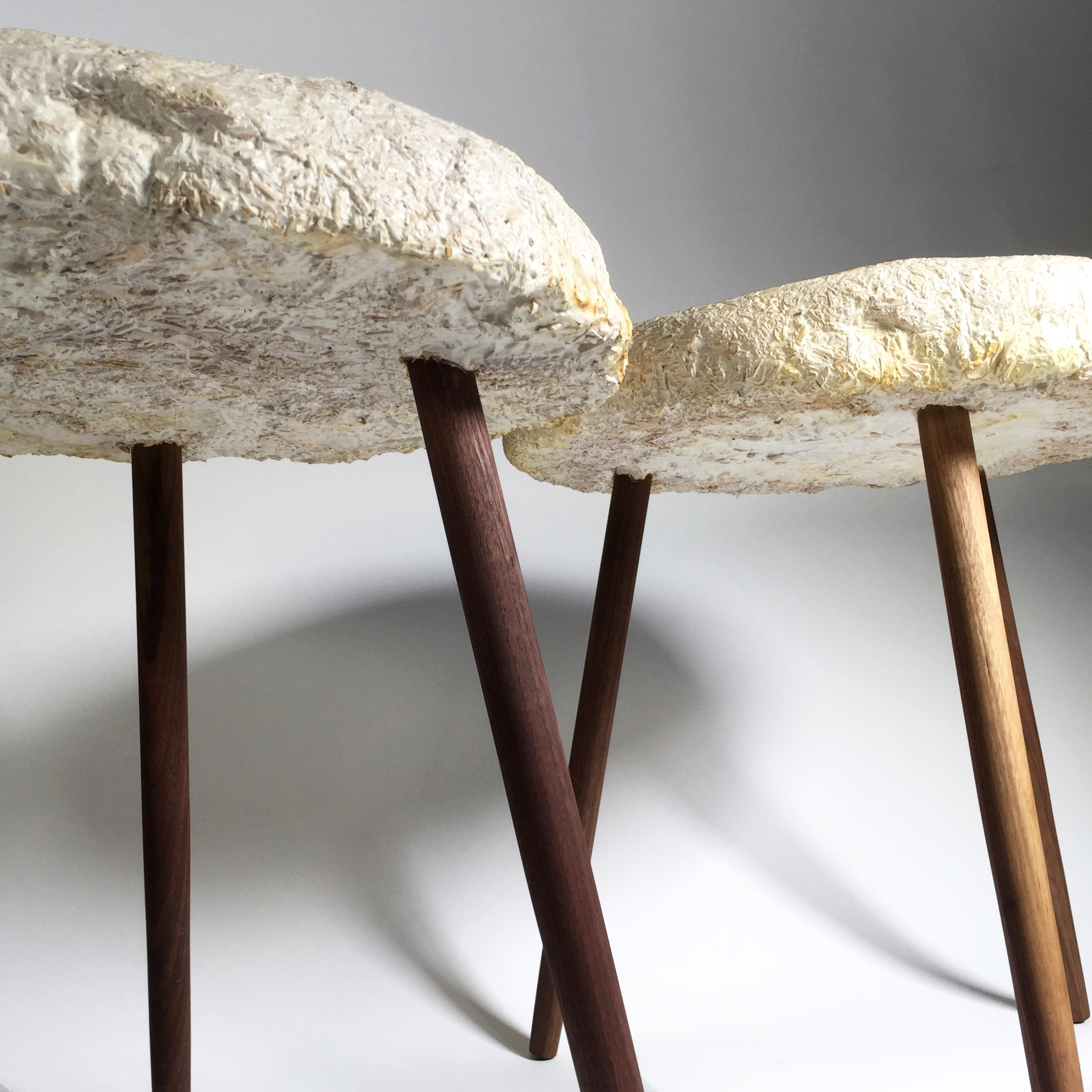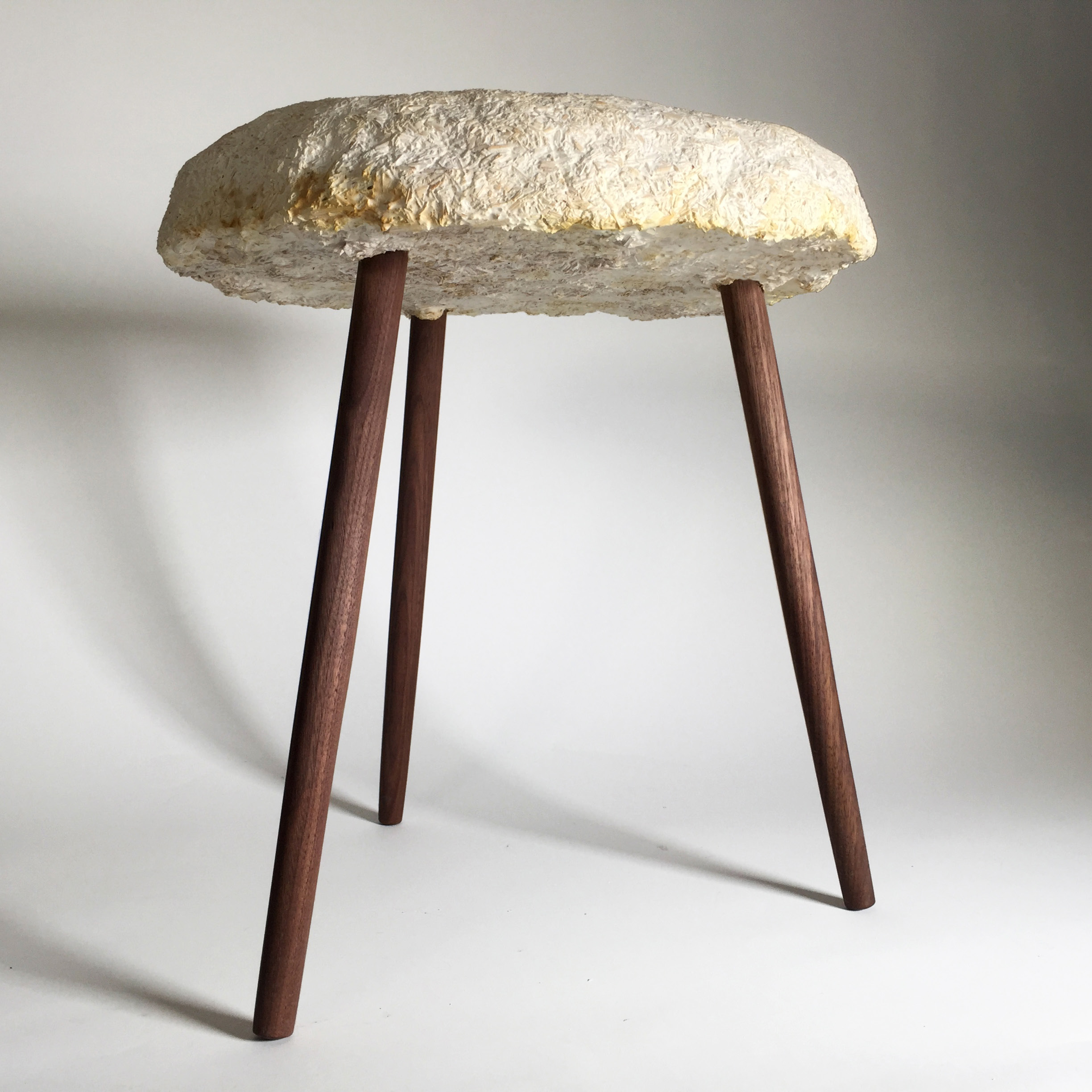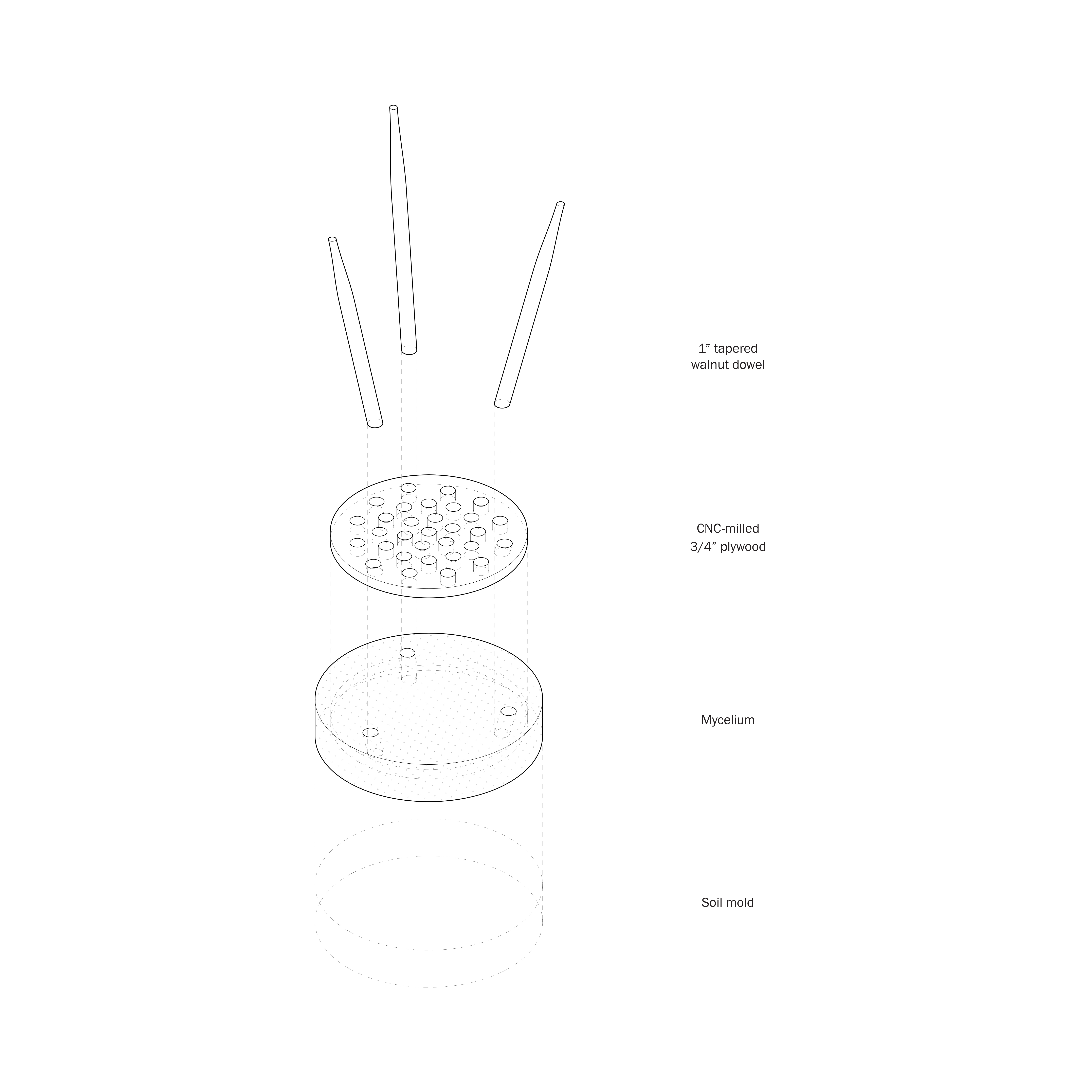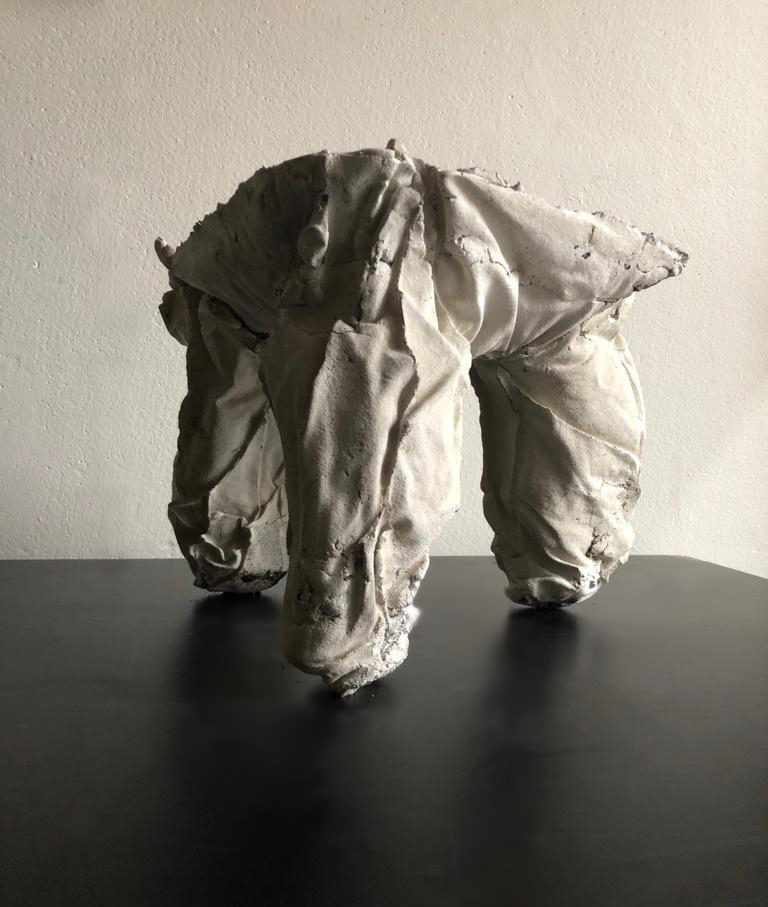Mycelium Stool

by Luke Warren (MArch ’22), Aditi Agarwal (MDes ’20), Hangsoo Jeong (MArch ’22), Victoria Patricia Lopez Cabeza (MDes ’20)
A seat grown from mycelium, soft and spongy, rests on three slender, hand-turned walnut legs. A hidden, CNC-milled piece of plywood, punctured with holes to reduce unnecessary weight, provides both the structure that connects the legs and a lattice for the mycelium to grow. The mycelium—the vegetative root structure of fungus—is grown around the wood structure in a mix of corn and hemp byproduct. As the mycelium grows, it binds this waste material together and conceals the construction of the stool. The visual and tactile contrast between the two materials produces a series of oppositions—light/dark, soft/hard, living/ dead, grown/machined, additive/subtractive—and, more to the point, a comfortable seat on a sturdy base. The use of soil to cast the mycelium eliminates both the material cost, in terms of dollars, and the environmental cost, in terms of embodied energy, of producing a mold, and further accentuates the contrast between the precision of the legs and the loose form of the mycelium seat. The stool is entirely constructed from renewable resources, and at the end of the stool’s life, the mycelium is fully compostable and bio-degradable.


